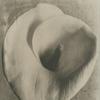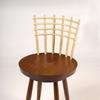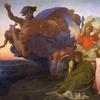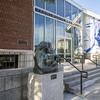'Picasso: The Great War, Experimentation and Change' Opens at the Barnes
- PHILADELPHIA, Pennsylvania
- /
- February 24, 2016
The Barnes Foundation, in partnership with the Columbus Museum of Art, Ohio, presents Picasso: The Great War, Experimentation and Change. On view February 21 through May 9, 2016, at the Barnes in Philadelphia, the exhibition will travel to the Columbus Museum of Art in June. Curated by Simonetta Fraquelli, an independent curator and specialist in early 20th-century European art, the exhibition examines the dramatic fluctuations in Picasso’s style during the period surrounding the First World War, from 1912 to 1924.
Inspired by the Columbus Museum’s Still Life with Compote and Glass (1914–1915) by Picasso and the Barnes’s extensive Picasso holdings, Picasso: The Great War, Experimentation and Change features some 50 works by Picasso drawn from major American and European museums and private collections. The show includes oil paintings, watercolors, drawings, and four costumes the artist designed for an avant-garde ballet, Parade, in 1917. The show also features several pieces by Picasso’s contemporaries, including Georges Braque and Henri Matisse.
Unlike other members of the Parisian avant-garde, Picasso never directly addressed the First World War as a subject in his art. Instead, he began experimenting with naturalistic representation, turning out classical figure drawings that outraged many of his avant-garde colleagues—this was quite a shift from the radical cubist approach he had been developing since 1907. Picasso did not give up cubism, however. Instead, he shuttled back and forth between two different styles for over a decade, breaking forms apart and making them whole again. This exhibition looks closely at the strange ambivalence that characterized Picasso's wartime production, exploring it in connection with changes to his personal life and with the political meanings ascribed to cubism during the war.
“A radical shift occurred in Picasso’s work in 1914,” notes curator Simonetta Fraquelli. “Following seven years of refining the visual language of cubism, he began to introduce elements of naturalism to his work.” This change in his production can be viewed against the backdrop of an unsteady cultural climate in Paris during the First World War. Many people identified the fragmented forms of cubism with the German enemy and therefore perceived it as unpatriotic. This negative impression reverberated throughout Paris during the First World War and may have been a factor in Picasso’s shift in styles. However, Fraquelli says, “what becomes evident when looking at Picasso’s work between 1914 and 1924, is that his two artistic styles—cubism and neoclassicism—are not antithetical; on the contrary, each informs the other, to the degree that the metamorphosis from one style to the other is so natural for the artist that occasionally they occur in the same works of art.”
Major works from the Picasso museums in Barcelona and Paris will be included in the exhibition, including Seated Woman (1920).
The exhibition also features four costumes that Picasso designed for the avant-garde ballet, Parade, which premiered in Paris in 1917: the original Chinese Conjurer costume and reproductions of the American Manager, French Manager, and Horse costumes. Performed by Sergei Diaghilev’s Ballets Russes, with music by Erik Satie, story by Jean Cocteau, and the choreography of Léonide Massine, Parade was the first cross-disciplinary collaboration of its kind. The ballet, which tells the story of an itinerant circus group performing a sideshow, was viewed as a revolutionary approach to theater. Picasso was the first avant-garde artist involved in such a production—not only designing the costumes, but also the theater curtain and set. A watercolor and graphite sketch of the curtain design and a pencil sketch of the Chinese Conjurer costume are included in the exhibition. Picasso drew inspiration for his designs from the modern world—everything from circuses and carousels to music halls and the cinema. With Picasso’s inventive geometric costumes and naturalistic curtain design, Parade may be the ultimate fusion of cubist and classical forms.
Picasso’s juxtaposition of figurative and cubist techniques can be seen as an expression of artistic freedom during a time of great conflict, and his shifts in style became a means of not repeating, in his words, “the same vision, the same technique, the same formula.” The works by Picasso’s contemporaries, such as Diego Rivera’s Still Life with Bread Knife from 1915 and Matisse’s Lorette in a Red Jacket from 1917, offer further insight into the shifting cultural climate in France during this transformative period.
Managing curator for Picasso: The Great War, Experimentation and Change at the Barnes Foundation is Martha Lucy. Managing curator at the Columbus Museum of Art is David Stark.









100x100_c.jpg)


